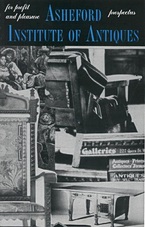|
New York - What's in a name? For those of us in the decorative arts industry it would appear that the common-usage monikers of antiques, collectibles and vintage may have finally begun to merge. In a span of less than two decades, many collectors, buyers, and sellers of Victorian and stately Georgian pieces have quietly morphed their interests and purchases beyond the standard classics, moving collections and inventories into the broader and more contemporary range of early-20th century, mid-century modern and vintage themed pieces. These separate, yet somehow relatable classifications have in many respects been forced upon traditional dealers by the public's changing tastes towards the decorative arts over the last twenty years. Gone are the ubiquitous and all encompassing brown-patina "antique" pieces that were once a staple of literally every mid to high-end home of the last sixty years - now replaced by the sleek and angular lines of twentieth-century modernism. However, after more than a few decades of seemingly divergent lines of travel in meaning and scope, it would now appear that some of these decorative art terms have not only begun to run parallel to each other, but in some cases have even begun to merge. Initially, many antique venues at the turn of the century, fearing a loss of public interest (and business), through the use of the word "antique," pivoted quickly by adopting new monikers that included vintage and retro into their overall promotion and branding strategies. Other businesses even went so far as to create category specific words such as "Vintiques," to convey the changing direction they felt the decorative arts market had taken. Yet surprisingly, for many industry insiders, these terms have almost come full-circle, to the point of even becoming somewhat synonymous with each other. While purists may still count the years to officially denote what constitutes a proper antique, others have taken on more of a blended sensibility when it comes to what these expressions truly represent. 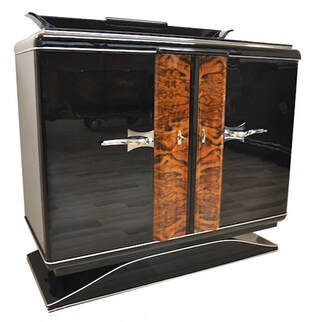 Art Deco Becomes "Antique" Art Deco Becomes "Antique" For a number of those working at the forefront of the decorative arts world, the blurring of lines has become almost too great to separate. Peter Thompson, a dealer just outside of Baltimore who runs an eclectic mix of old, and not so old, says he thinks items should be broken down by cultural themes representative of the time period, rather than just a blanket statement of age based on an accrued number of years. "I much prefer using the descriptor Art Deco Antiques, rather than simply classifying my inventory as a collection of early twentieth-century pieces." Thompson thinks the antique term continues to be relative though, but benefits from the style association. "I still believe that deep down most people associate greater intrinsic values with items termed antique than they do with just vintage or collectible." The seemingly arbitrary and somewhat singular nature of the term antique, other than it's use for classifying items one-hundred years or older for tax purposes, has perhaps run its course says Shannon Grey, an owner/operator of an antique and vintage jewelry business on Etsy. Grey believes that buyers have outgrown such restrictive and seemingly all encompassing terminology. "I think it's better to describe something that's more reflective of a style and time, rather than just saying it's antique or vintage," says Grey. While much of her inventory is spread across the twentieth century, Grey likes to define her stock by style first and date later. "I may begin with Art Nouveau, but I also understand that adding antique onto the sales-label tends to denote scarcity and rarity to my customers, which in turn, usually translates into a better pay-day." Grey isn't alone in her desire to attempt to restructure the terms that can often define one's business. David Howell, a second generation antique dealer from San Francisco says it really can come down to terminology. "Modifying the use of antique in my father's business name and replacing it with "Antique & Decorative Arts Sales," was probably one of the best moves we could have made," says Howell. "It changed the trajectory of our sales by bringing in a younger clientele that had a wider overall interest than just period-correct antiques." However, Howell also noted that being able to now apply the term antique to his substantial inventory of Art Deco pieces, because of crossing the hundred-year milestone, has also had its benefits. "It's added a tremendous amount of cachet, and inferred value, as opposed to just having a used or vintage moniker," says Howell. "Wording can make a big difference in customers minds when it comes to opening their wallets." So, has the "antique" moniker really been ostracized or suffered from call-out culture within the professional realm of the decorative arts? For the longest time, the term antique has generally been associated with the image of brown furniture, since anything prior to 1920 really didn't incorporate much in the way of truly modern construction materials. However, for many dealers, the recent resurgence in popularity of Art Deco, and its timely inclusion within the hundred-year club, may well be the reason for the return of the antique descriptor to its proper place of honor in the pantheon of decorative arts terminology. For David Howell, the answer is more straightforward. "When Art Deco became part of the family, true modernism fell under the 'antique umbrella' for the first time in decorative arts history." If Mr. Howell is correct in his assessment, then it may not be long before we're coining today's top collecting category as simply, "Mid-Century Antique." - A.I.A. Staff Writers 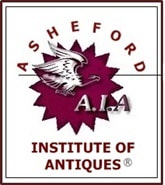 NOTE: For readers seeking more information about the Asheford Institute Of Antiques distance-learning program on professional-level appraising, the study of antiques, collectibles, vintage and mid-century modern items, please click here to visit the school's Home Page. Should you have additional questions about the Asheford program, you can also write to the school at: info@asheford.com or call the Registrar's Office toll-free at: 1-877-444-4508. |
AIA StaffWe're providing our students and reader's with the latest breaking news on events and happenings that we think might be of interest to both collectors and dealers alike. Including changes within the world of antiques, vintage, collectibles and appraising that might just have an effect on your bottom line. We're also interested in hearing from you - so if you've got a great newsworthy story, let us know, and you just might find it here! Archives
July 2024
CategoriesLegal Disclaimer: Extraneous opinions, statements and comments made by individuals represented within these posts do not necessarily reflect those of the Institute. The publication naming of specific business entities, organizations, and concerns, contained herein, in no way represents an endorsement or recommendation of services or products by the Institute. Publicly identifiable information contained herein (including, but not limited to contact information), has been intentionally limited where possible, due to privacy and legal concerns related to the digital dissemination of information through online means. All views expressed herein are those of their respective owners. The Institute is in no way responsible, financially or otherwise, for the accuracy or validity of statements contained within published posts from sources that originate and appear outside of the written and expressed views of those submitted by the Institute.
|
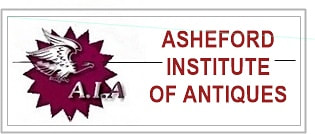
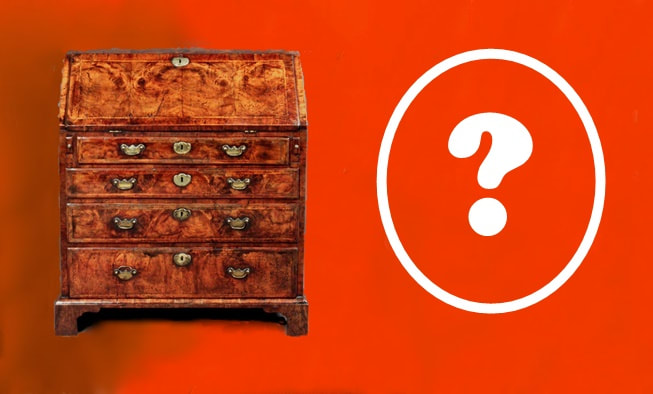
 RSS Feed
RSS Feed
